这是KVM系列的第二部分,我们在这里讨论如何在KVM环境中使用网络安装部署Linux虚拟机。我们将讨论三种类型的网络安装(FTP, NFS和HTTP),它们中每一种有它特殊的前提条件。
使用FTP的网络安装
1、在开始前,我们应该安装ftp服务软件包。
[root@localhost images]# yum install vsftpd2、在安装了vsftpd后,介质启动并且使得这个服务永久启用。
[root@localhost images]# systemctl start vsftpd
[root@localhost images]# systemctl enable vsftpd
Created symlink from /etc/systemd/system/multi-user.target.wants/vsftpd.service to /usr/lib/systemd/system/vsftpd.service.3、出于安全考虑,你需要添加FTP服务到防火墙。
[root@localhost images]# firewall-cmd --permanent --add-service=ftp
success
[root@localhost images]# firewall-cmd --reload
success4、现在该选取你想要使用的首选Linux ISO,在这里我们使用CentOS7 ISO。让我们在/var/ftp/pub下创建一个目录CentOS7作为这个ISO文件的挂载点进行挂载。
[root@localhost images]# mkdir /var/ftp/pub/CentOS7
[root@localhost images]# mount -t iso9660 -o ro /mnt/CentOS-7-x86_64-2009.iso /var/ftp/pub/CentOS7
[root@localhost images]# ls /var/ftp/pub/CentOS7
CentOS_BuildTag EULA images LiveOS repodata RPM-GPG-KEY-CentOS-Testing-7
EFI GPL isolinux Packages RPM-GPG-KEY-CentOS-7 TRANS.TBL
5、最终重启vsftpd服务并且检查这个服务的状态。
[root@localhost images]# systemctl restart vsftpd
[root@localhost images]# systemctl enable vsftpd
[root@localhost images]# systemctl status vsftpd
● vsftpd.service - Vsftpd ftp daemon
Loaded: loaded (/usr/lib/systemd/system/vsftpd.service; enabled; vendor preset: disabled)
Active: active (running) since Fri 2022-07-15 15:26:59 CST; 6s ago
Process: 25619 ExecStart=/usr/sbin/vsftpd /etc/vsftpd/vsftpd.conf (code=exited, status=0/SUCCESS)
Main PID: 25620 (vsftpd)
Tasks: 1
CGroup: /system.slice/vsftpd.service
└─25620 /usr/sbin/vsftpd /etc/vsftpd/vsftpd.conf6、用ftp软件进行验证:主机IP地址,用户名为anonymous,密码为空
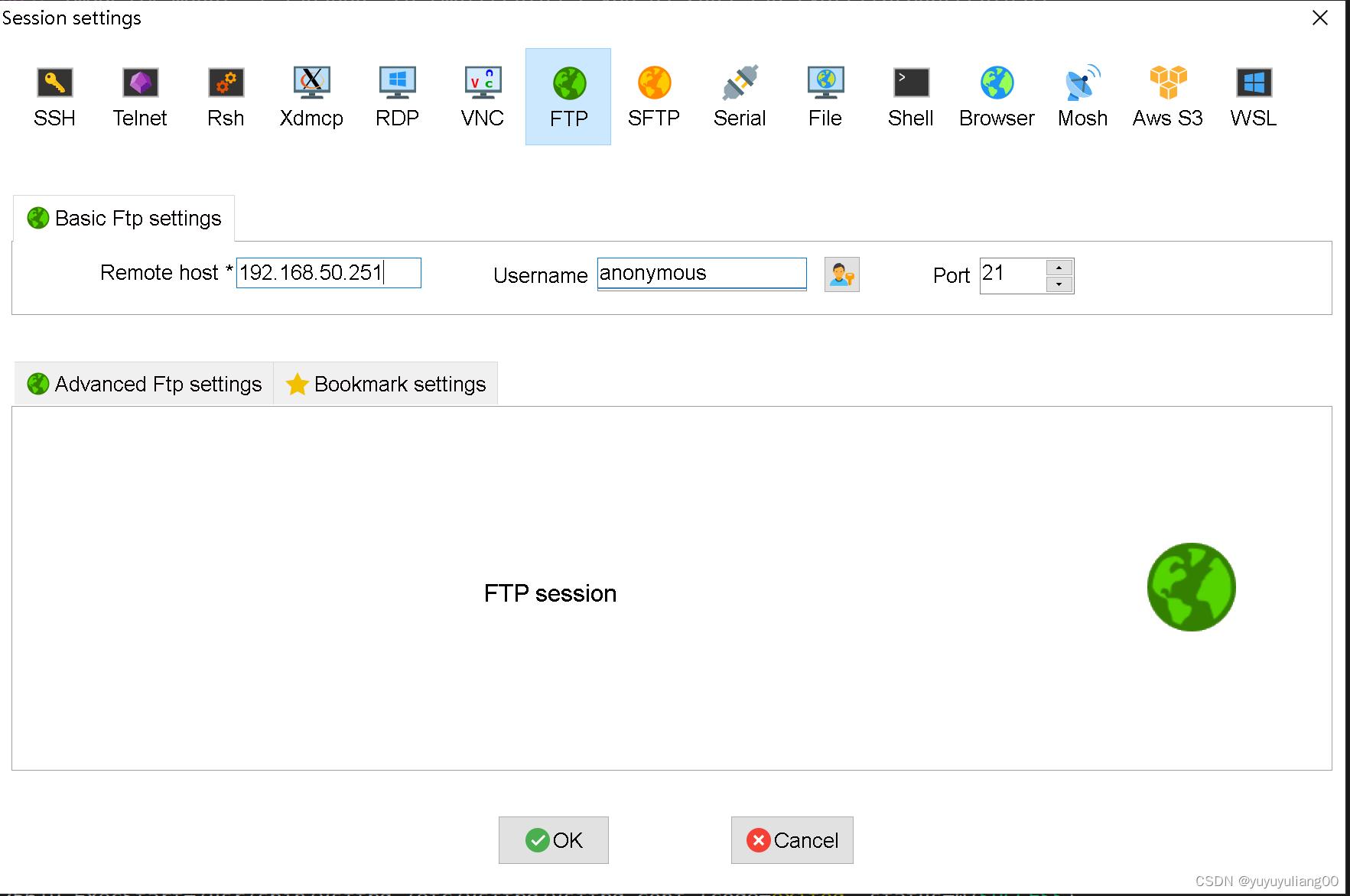
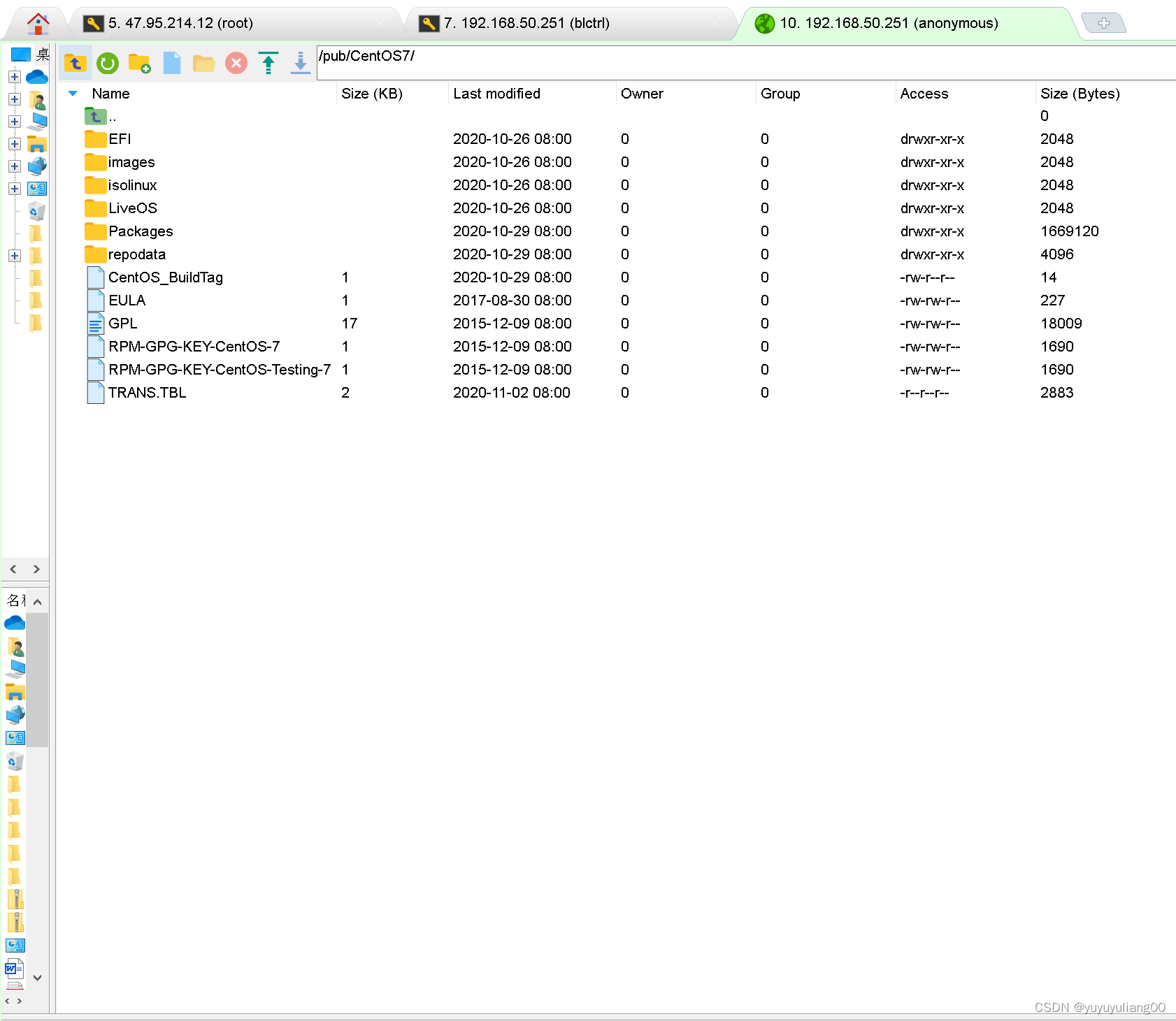
7、现在是时候启动我们的GUI工具virt-manager了。
[root@localhost images]# virt-manager8、在启动"virt-manager"后,创建新的虚拟机,接着从这个窗口选择网络安装。
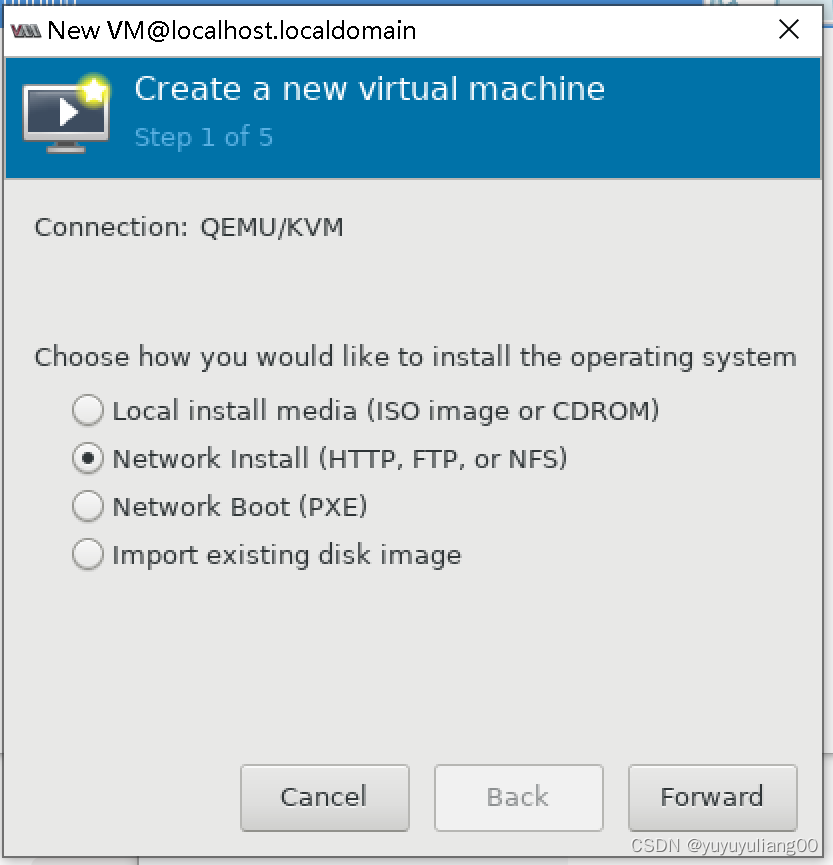
9、当你首先安装了KVM软件包时,创建了虚拟桥来连接虚拟机和物理主机。你可以使用ifconfig命令显示它的配置。
[root@localhost images]# ifconfig virbr0
virbr0: flags=4163<UP,BROADCAST,RUNNING,MULTICAST> mtu 1500
inet 192.168.122.1 netmask 255.255.255.0 broadcast 192.168.122.255
ether 52:54:00:b7:8a:74 txqueuelen 1000 (Ethernet)
RX packets 5690 bytes 304012 (296.8 KiB)
RX errors 0 dropped 0 overruns 0 frame 0
TX packets 9466 bytes 531767312 (507.1 MiB)
TX errors 0 dropped 0 overruns 0 carrier 0 collisions 0你将注意到IP:192.168.122.1被分配给了虚拟桥virbr0。虚拟机使用这个IP来连接物理主机。所以,我们说这个IP地址表示物理机在虚拟网络环境中。
我们将使用以下IP提供到我们FTP目录的URL路径,这个FTP目录包含我们ISO的文件。如果你在另一台/远程主机上部署了你的FTP,只要输入其它服务器的IP地址替代先前的IP。

10、接着将与教程的先前部分相同,询问你资源和存储。在最后,你将到达这个窗口。
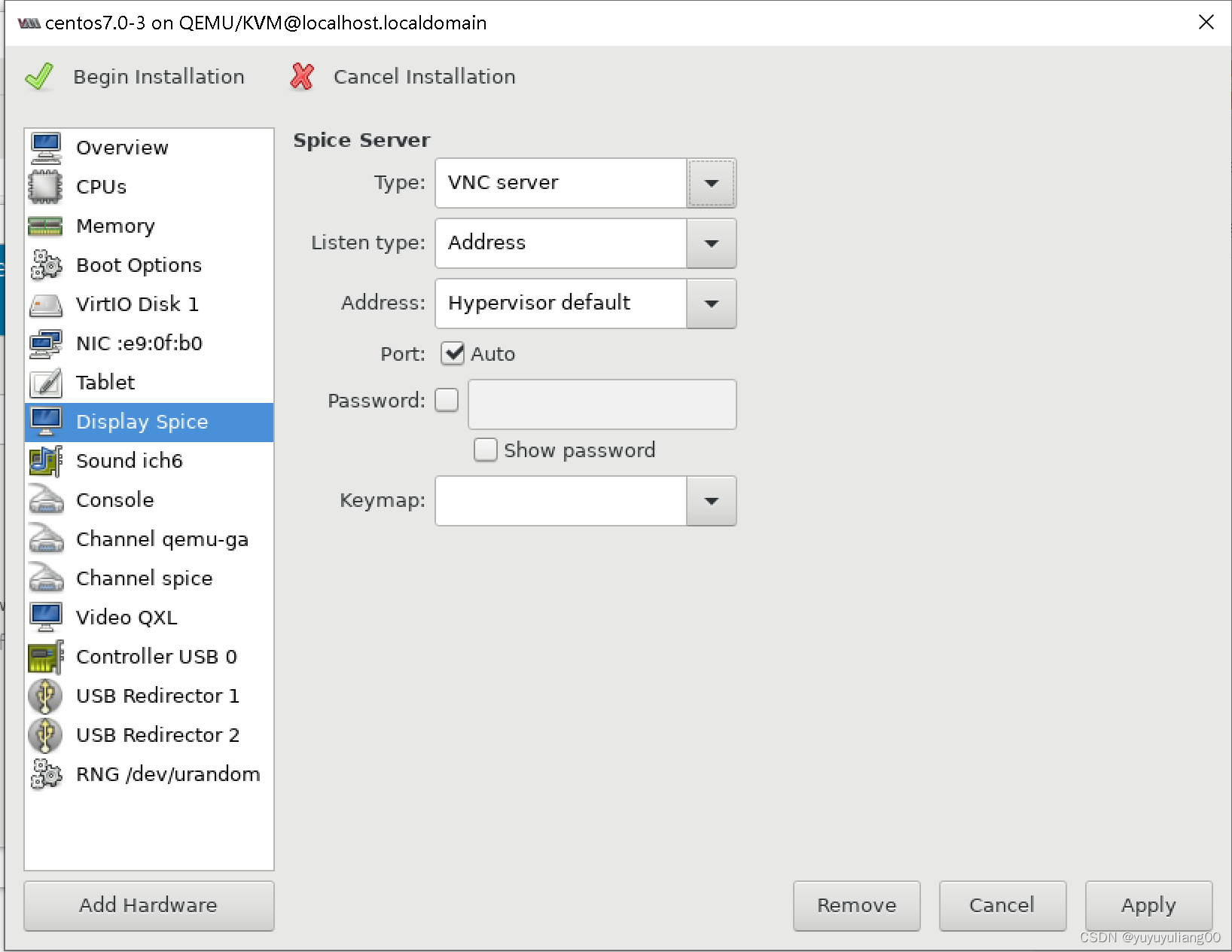
11、 按下Finish后,进入了新虚拟机安装界面:
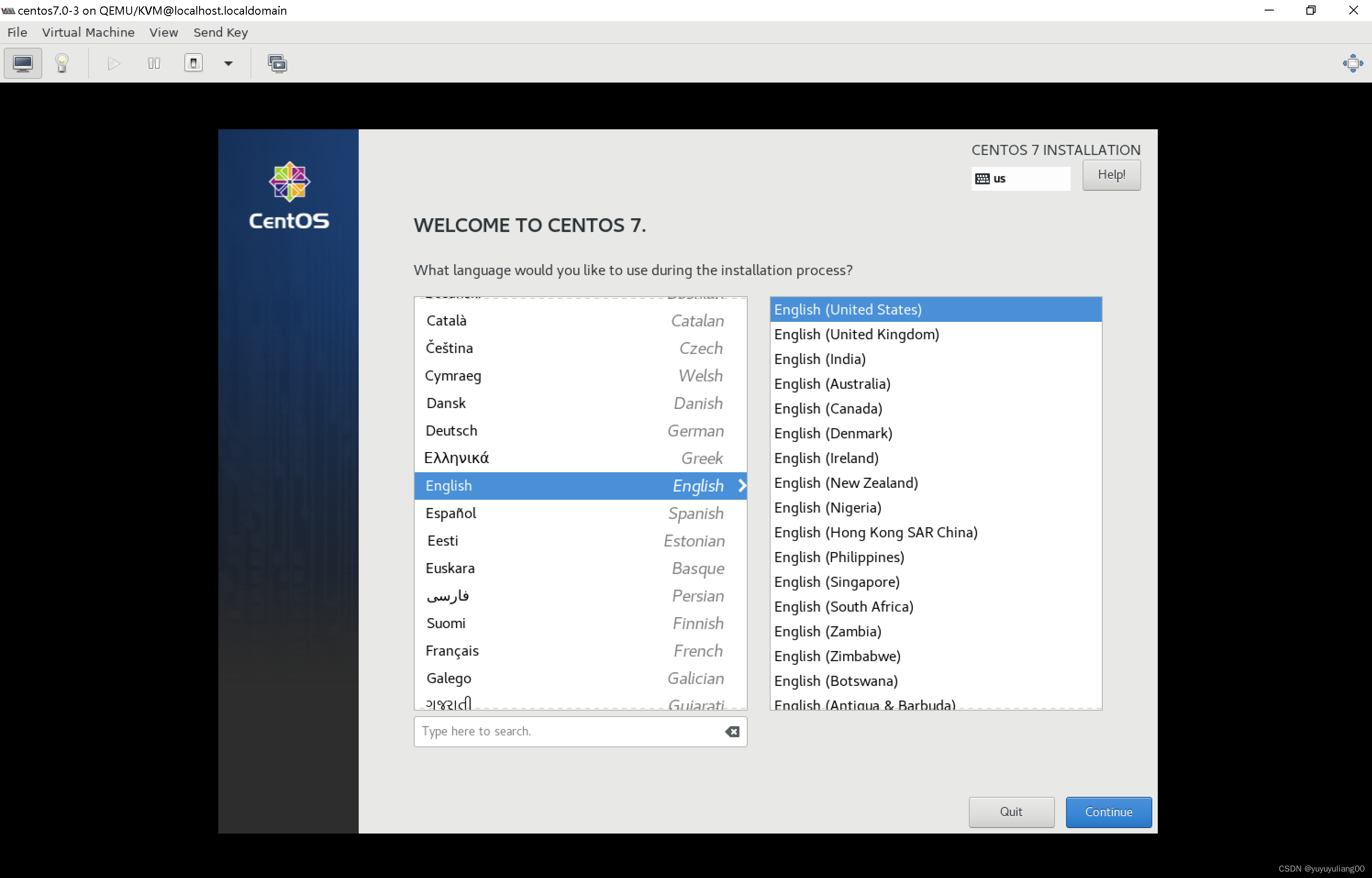
使用NFS的网络安装
1、我们有几乎相同的步骤,安装nfs服务软件包。
[root@localhost images]# yum install nfs-utils
2、接着,启动nfs服务并且永久地添加它到防火墙
[root@localhost images]# systemctl start nfs
[root@localhost images]# systemctl enable nfs
Created symlink from /etc/systemd/system/multi-user.target.wants/nfs-server.service to /usr/lib/systemd/system/nfs-server.service.
[root@localhost images]# firewall-cmd --permanent --add-service=nfs
success
[root@localhost images]# firewall-cmd --reload
success3、创建挂载点,并进行挂载。
[root@localhost images]# mkdir -p /mnt/nfs/CentOS7
[root@localhost images]# mount -t iso9660 -o ro /mnt/CentOS-7-x86_64-2009.iso /mnt/nfs/CentOS74、我们应该通过编辑/etc/exports共享挂载点使用NFS共享。
[root@areadetector etc]# vim /etc/exports
[root@areadetector etc]# cat /etc/exports
/mnt/nfs/CentOS7 192.168.3.0/24(rw,sync)
[root@areadetector etc]# exportfs -av
exporting 192.168.3.0/24:/mnt/nfs/CentOS75、启动virt-manager,并选择从网络安装,填入nfs共享地址
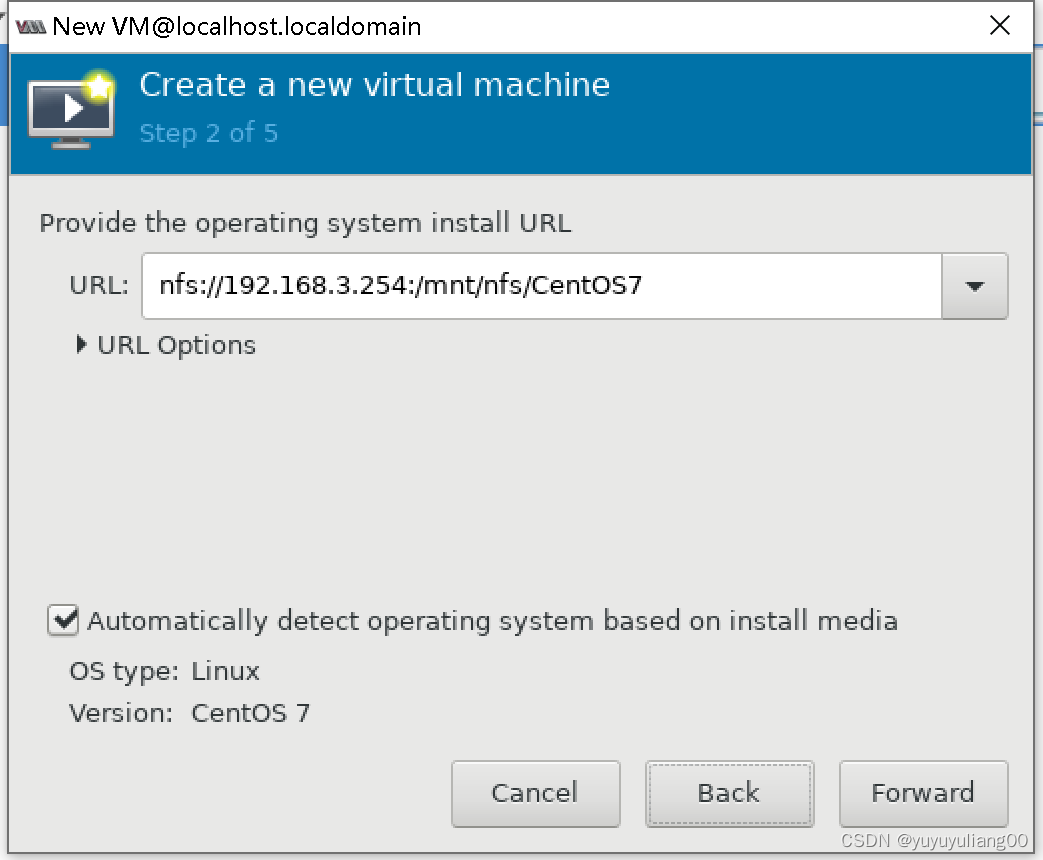
6、按提示地操作步骤,完成虚拟机地创建
使用HTTP的网络安装
1、我们基本也有相同的步骤,安装http服务软件包,启动它并且使它在防火墙上悠久使能。
[root@areadetector blctrl]# dnf install httpd
Last metadata expiration check: 1:36:16 ago on Mon 18 Jul 2022 11:59:33 AM CST.
Dependencies resolved.
...
Complete!
[root@areadetector blctrl]# systemctl start httpd
[root@areadetector blctrl]# systemctl enable httpd
Created symlink /etc/systemd/system/multi-user.target.wants/httpd.service → /usr/lib/systemd/system/httpd.service.
[root@areadetector blctrl]# firewall-cmd --permanent --add-service=http
success
[root@areadetector blctrl]# firewall-cmd --reload
success
2、接着,创建一个挂载点var/www/html/CentOS7,并且把光盘镜像挂载到这个位置:
mkdir /var/www/html/CentOS7
1014 mount -t iso9660 -o ro harddisk/CentOS-7-x86_64-Everything-2009.iso /var/www/html/CentOS73、重启http服务器,并且查看其运行状态
[root@areadetector mnt]# systemctl restart httpd
[root@areadetector mnt]# systemctl status httpd
● httpd.service - The Apache HTTP Server
Loaded: loaded (/usr/lib/systemd/system/httpd.service; enabled; vendor preset: disabled)
Active: active (running) since Mon 2022-07-18 13:55:26 CST; 9s ago
Docs: man:httpd.service(8)
Main PID: 734280 (httpd)
Status: "Running, listening on: port 80"
Tasks: 213 (limit: 820636)
Memory: 18.3M
CGroup: /system.slice/httpd.service
├─734280 /usr/sbin/httpd -DFOREGROUND
├─734282 /usr/sbin/httpd -DFOREGROUND
├─734283 /usr/sbin/httpd -DFOREGROUND
├─734284 /usr/sbin/httpd -DFOREGROUND
└─734285 /usr/sbin/httpd -DFOREGROUND4、在以下界面中,填写http服务器中安装镜像的地址,
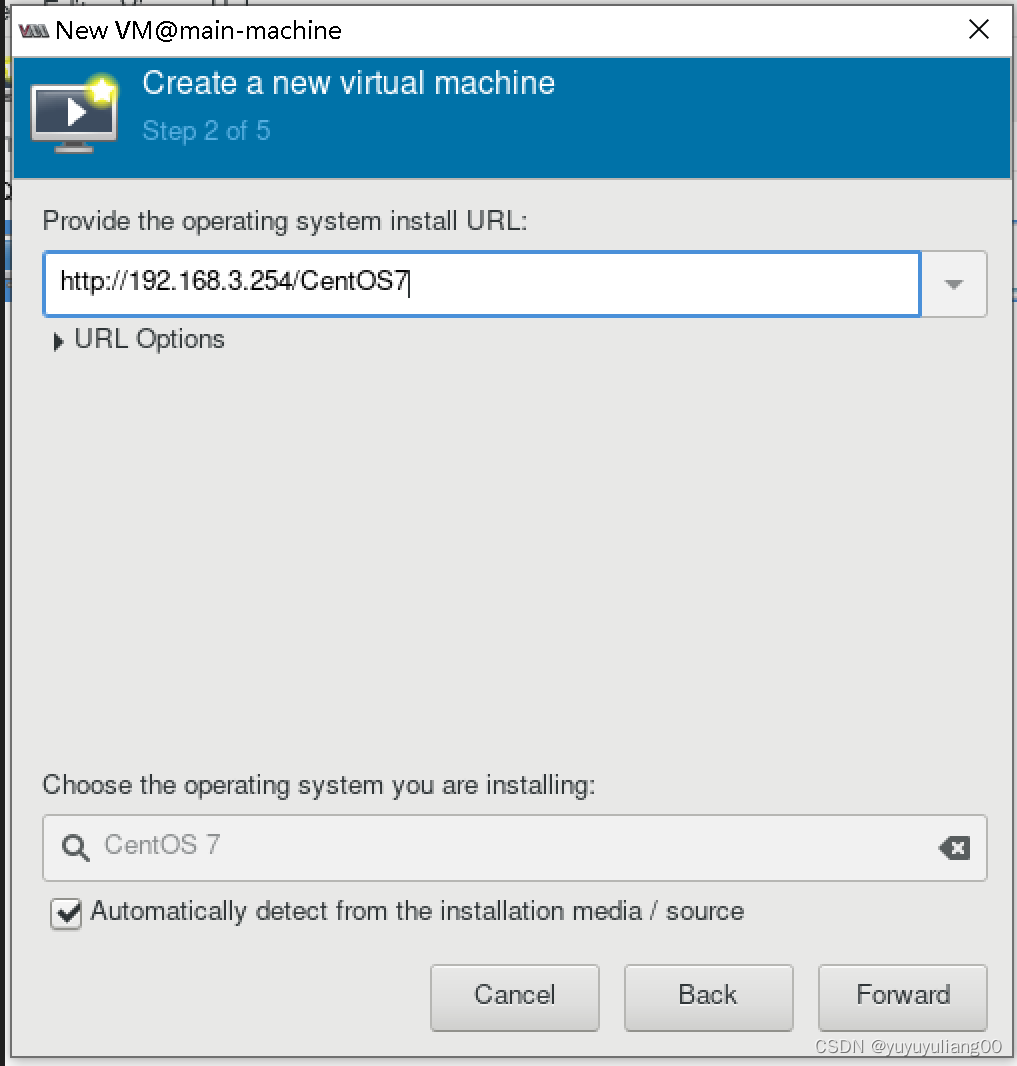
5、出现以下安装界面:
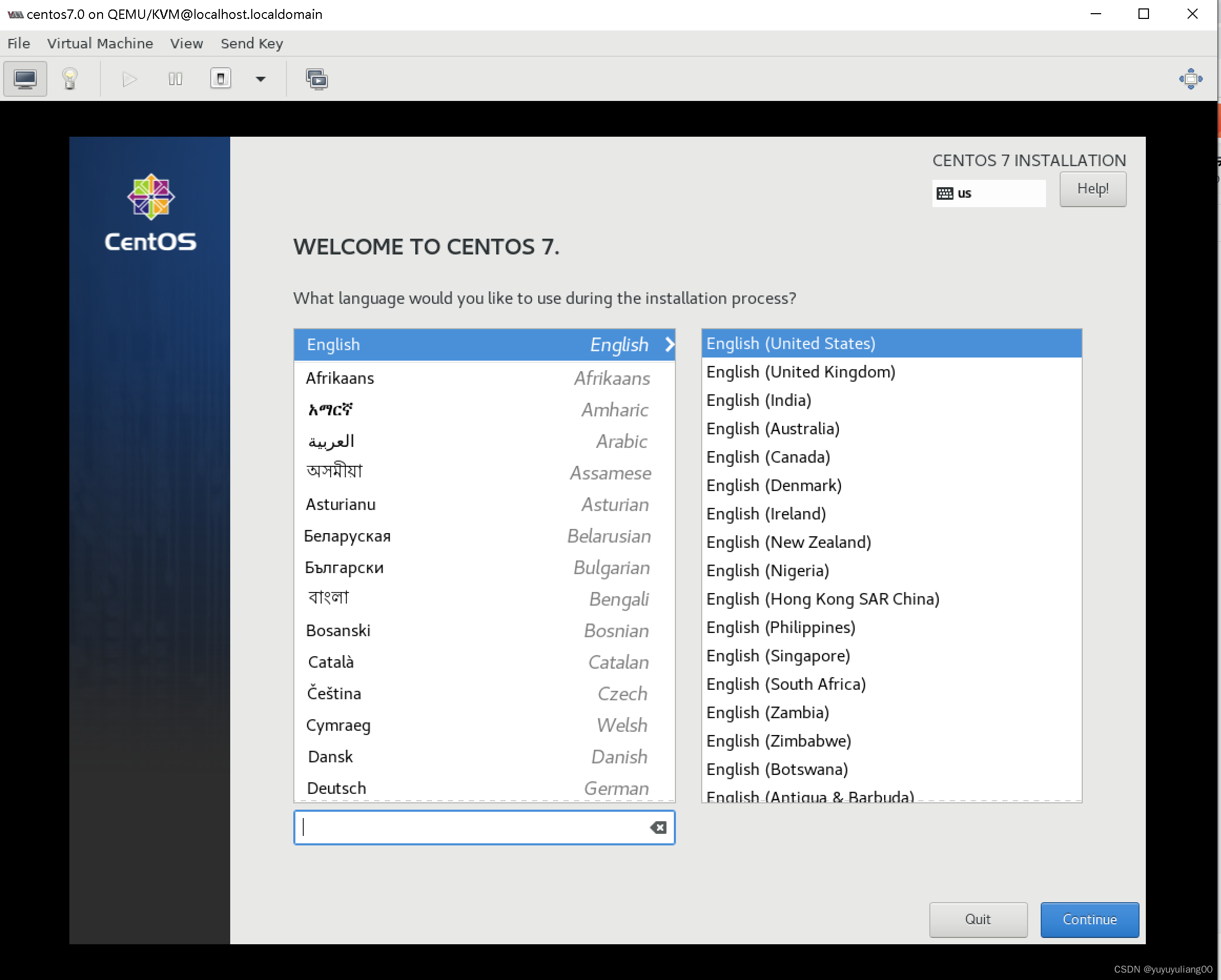
6、按提示地操作步骤进行安装。
最后
以上就是着急枫叶最近收集整理的关于如何在KVM环境中使用网络安装部署多台虚拟服务器的全部内容,更多相关如何在KVM环境中使用网络安装部署多台虚拟服务器内容请搜索靠谱客的其他文章。








发表评论 取消回复